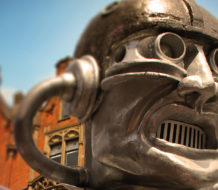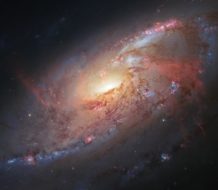Bad ideas die hard, and then sometimes they come back to life. One such bad idea is the so-called design argument that goes something like this: “Behold the human eye: It is perfectly adapted to seeing the things we need to see, like predators or potential mates. It looks almost like the eye was designed by some master craftsman. In fact, the most reasonable conclusion is that it was designed, and therefore that there is a Designer, whom we might as well call God.”
It wasn’t always obvious that this argument is bad. Back in the days before Darwin discovered evolution we didn’t have a good scientific explanation for the adaptations of biological species. And for lack of a better explanation, why not God?
Fast forward to the 1970s. Nobody in the biological sciences had taken seriously for well over a century the idea that biological adaptations need a divine explanation. But then something surprising happened when the design argument emerged from the ashes in one of the most exciting new scientific disciplines of the 20th century—physical cosmology.
This new fine-tuning design argument claims the imprimatur of physics, and is presented in quantitatively precise terms: among the set of all possible universes, the percentage that could sustain life is so small that the human mind cannot imagine it. By all rights, our universe shouldn’t have existed. What wonder that our universe has given birth to life, especially intelligent life. It seems the only explanation for this wildly improbable outcome is the supposition that there is a Designer.
But could it really be that physics points to God’s existence?
Get BQO by E-mail
ESSAYS
-

What Is Moral Injury?
-

What Does It Mean to Have Free Will?
-

Should We Fear Robots?
-

Do We Need Purposes in Biology?






